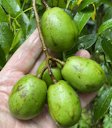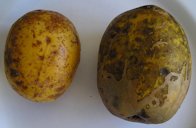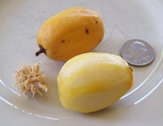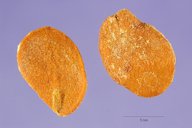| Ambarella - Spondias dulcis | |||||||||||||
|---|---|---|---|---|---|---|---|---|---|---|---|---|---|
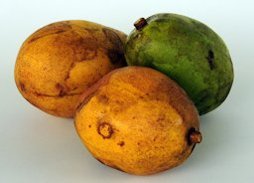 Fig. 1  Ambarella Spondias dulcis, La Digue and Inner Islands, SC Fig. 2 Polynesian-plum (S. dulcis), Dong Xuan Center, Berlin, Germany 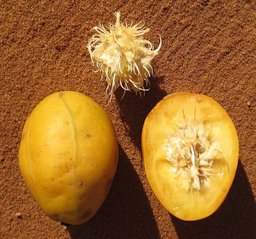 Fig. 3  S. cytherea. Not common in Mozambique. It is only found in the northern coastal zone of Cabo Delgado province. It produces fruits in a period of the year when few other fruits are produced, which is a definite advantage. 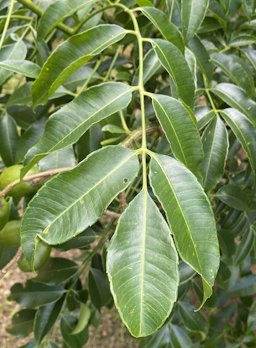 Fig. 4  Ambarella S. dulcis, Moorea, French Polynesia, PF 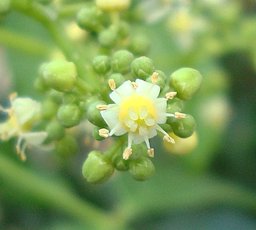 Fig. 5  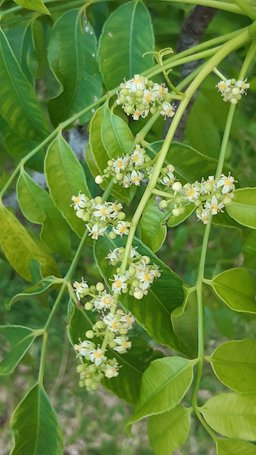 Fig. 6  Ambarella S. dulcis, Anse Étoile, Seychelles 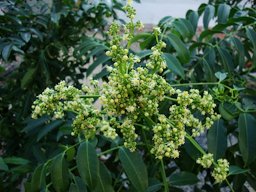 Fig. 7  Cóc Tahiti (Vietnamese) inflorescens 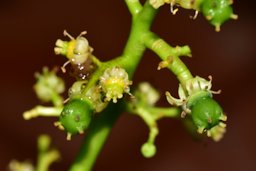 Fig. 8  Ambarella S. dulcis, Warren, Trinidad and Tobago 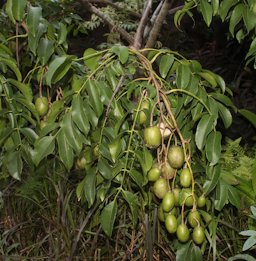 Fig. 9  S. dulcis, fruit habit 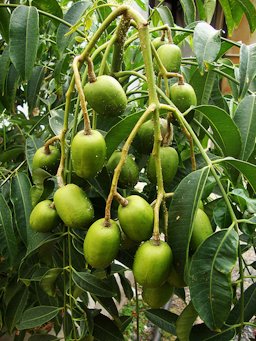 Fig. 10  S. dulcis, Cóc Tahiti (Vietnam) 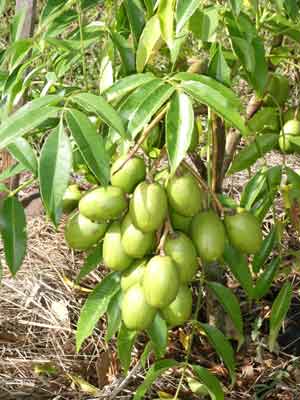 Fig. 11 Dwarf ambarella (S. dulcis) one year old seedling 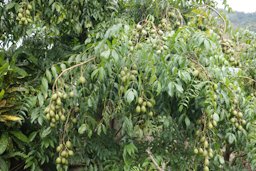 Fig. 18  Ambarella S. dulcis, Taitung, Taiwan 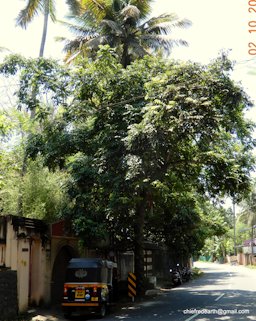 Fig. 19  Ambarella S. dulcis, Punchakkari, Thiruvananthapuram, Kerala, India 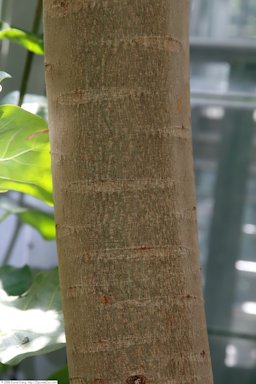 Fig. 20  United States Botanic Garden, S. dulcis 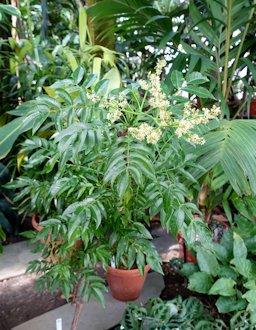 Fig. 21  Botanical specimen in the Lyman Plant House, Smith College, Northampton, Massachusetts, USA 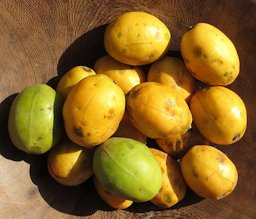 Fig. 22  S. cytherea. In the local Muani language: "embe gongo" ("embe" means "mango"). This fruit is rare in Mozambique, and the tree is only found cultivated in the coastal zone of the north. 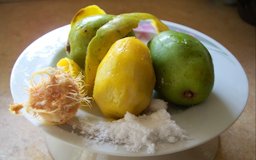 Fig. 23  June plum, summer Isn’t the same without it! When ripe, it is sweet, yet tangy, crunchy and juicy, very delicious! 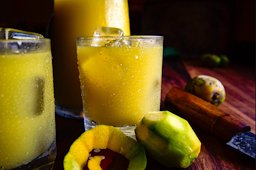 Fig. 24  June plum juice 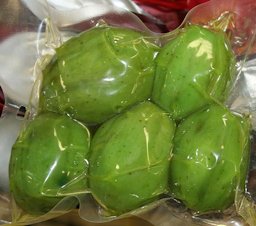 Fig. 25  Preserved ma-kok (Thai), sweet and sour with chili 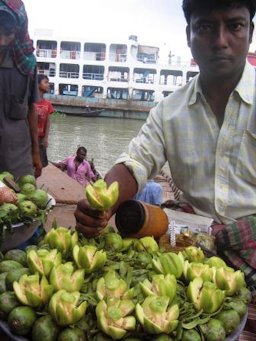 Fig. 26 The fruit of S. dulcis with its characteristic fibrous pit (it is not S. mombin which lacks these radial fibers) |
Scientific
name Spondias dulcis Parkinson Common names English: Otaheite apple, Tahitian quince, Polynesian plum, Jew plum, golden apple; Brazil: caja-manga; Costa Rica: juplón; Colombia: hobo de racimos; Indonesia: kedongdong; Ecuador: manzana de oro; French: casamangue, pomme cythère, prune cythère; German: Goldpflaume; Malaya: great hog plum or kedondong; Spanish: ambarella, jobo de la India taperiba (Peru); Thailand: ma-kok-farang; Cambodia: mokak; Vietnam: coc, pomme cythère or Pommier de cythère; Venezuela: jobo de la India, jobo de Indio, or mango jobo 2,3 Synonyms S. cytherea Sonn. Relatives Spondias tuberosa, S. pinnata, S. acida, S. novoguineensis, and S. borbonica, cashew (Anacardium occidentale), mango (Mangifera indica), and pistachio (Pistacia vera) 1 Family Anacardiaceae (cashew family) Origin South Pacific Islands 1 USDA hardiness zones 9-12 Uses Fruit; vegetable; ornamental 3 Height Up to 60 ft (18 m); 30 ft (9 m) in south Florida 1 Spread 50-60 ft. (15-18 m) 11 Crown Open spreading canopies with branches that tend to extend horizontally 1 Plant habit Erect; stately; usually stiff in appearance; symmetrical 2 Growth rate Fast 4 Trunk/bark/branches Trunk gray; smooth; sparingly buttressed; few lenticels; yellowish viscous sap; branches stiff and brittle 4.10 Pruning requirement Maintain at a height of 12-15 ft (3.7-4.6 m) or less 1 Leaves Deciduous; compound; glossy; toothed margins; strong resinous smell when bruised 4 Flowers Small; inconspicuous; whitish; borne in large terminal panicles; male, female and perfect in each cluster 2 Fruit (climacteric) Orange-yellow; clusters of 3-20; globular to ovoid; drupe; tough skin; yellow pulp, fibrous; single large seed; fine lenticels; small brown/black spots 2,10 Season Nov.- May 1 Light requirement Full sun 1 Soil tolerances All types of soil, including oolitic limestone in Florida; well-drained 1 pH preference 5.5-7.5 8 Drought tolerance Mature trees are drought tolerant 9 Flood tolerance Not tolerant 1 Soil salt tolerance Poor salt tolerance Cold tolerance Mature trees can sustain 25°F (-3.9°C); young trees killed at 29°F to 30°F (-1.7 to -1.1°C) 1 Plant spacing 25-40 ft (7.5-12 m); dwarf variety closerP1, Invasive potential * None reported Pest resistance Insect pests and diseases are minimal 1 Known hazard The fruit may present a choking hazard if the core and fibers are not properly removed; contact with foliage and sap may cause dermatitis in some individuals 4 Reading Material Spondias Growing in the Florida Home Landscape, University of Florida pdf Ambarella, Fruits of Warm Climates The Ambarella, Manual Of Tropical And Subtropical Fruits Spondias cytherea Sonnerat, PROSEA Foundation Origin/Distribution The ambarella is native from Melanesia through Polynesia and has been introduced into tropical areas of both the Old and New World. It is common in Malayan gardens and fairly frequent in India and Ceylon. The fruits are sold in markets in Vietnam and elsewhere in former Indochina. It first fruited in the Philippines in 1915. It is cultivated in Queensland, Australia, and grown on a small scale in Gabon and Zanzibar. It was introduced into Jamaica in 1782 and again 10 years later by Captain Bligh, probably from Hawaii where it has been grown for many years. It is cultivated in Cuba, Haiti, the Dominican Republic, and from Puerto Rico to Trinidad; also in Central America, Venezuela, and Surinam; is rare in Brazil and other parts of tropical America. 2 Description Golden apple fruits at the mature-green, semi-ripe and ripe stages of maturity are utilized in the fresh and processed states and are a major export fruit and foreign exchange earner for many Caribbean islands. 7 The ambarella grows well in coastal areas of south Florida and produces a fruit of fair quality. The flavor is pleasant and the juice refreshing, but the spiny core and tough fibers detract from eating quality. In texture and taste, the fruit has been likened to an under-ripe pineapple. Nevertheless, the ambarella has several advantages. It produces over the fall and winter when few other species are in season. It bears ample quantities of fruit over several months. the tree is attractive and requires little care. 4 Leaves The leaves are deciduous, handsome, pinnate leaves, 8 to 24 in (20-60 cm) in length, composed of 9 to 25 glossy, elliptic or obovate-oblong leaflets 2 1/2 to 4 in (6.25-10 cm) long, finely toothed toward the apex. At the beginning of the dry, cool season, the leaves turn bright-yellow and fall, but the tree with its nearly smooth, light gray-brown bark and graceful, rounded branches is not unattractive during the few weeks that it remains bare. 2 Flowers Each panicle consists of small whitish flowers that are morphologically hermaphrodite but functionally unisexual, ie flowering is androgynous. The proportion of male and female flowers is variable. 6 Vegetative flushing and flowering occur together. In areas with a dry season, flowering occurs on trees that are nearly leafless from lack of soil moisture. Subtropical conditions lead to flowering in spring. The dwarf selection flowers and produces fruit all year around. 9 Fruits (climacteric) Long-stalked fruits dangle in bunches of a dozen or more; oval or somewhat irregular or knobby, and 2 1/2 to 3 1/2 in (6.25-9 cm) long, with thin but tough skin, often russetted. While still green and hard, the fruits fall to the ground, a few at a time, over a period of several weeks. As they ripen, the skin and flesh turn golden-yellow. While the fruit is still firm, the flesh is crisp, juicy and subacid, and has a somewhat pineapple-like fragrance and flavor. If allowed to soften, the aroma and flavor become musky and the flesh difficult to slice because of conspicuous and tough fibers extending from the rough ridges of the 5-celled, woody core containing 1 to 5 flat seeds. Some fruits in the South Sea Islands weigh over 1 lb (0.45 kg) each. 2 May be eaten green or ripe. 1
Fig. 12. Ambarella S. dulcis, Māhina, French Polynesia Fig. 13. S. dulcis, (Português) Cajamanga com casca Fig. 14. (Português) Cajamanga descascada Fig. 15. Ambarella S. dulcis, Aman Perdana, Klang, Selangor, Malaysia Fig. 16. June Plum, S. cytherea Varieties A dwarf form is available, up to 11 feet. 1 Harvesting Dry season determines when flowering occurs and as a consequence, fruit set and time to harvest. Dwarf ambarellas tend to overproduce which results in stunted growth or sometimes even death. Fruit thinning is recommended for dwarf ambarellas. 1 In the humid tropics it produces more or less continuously, following flushing and flowering of individual twigs. 5 After flowering and fruit set, they take 5-6 months to mature; colour break then follows during the ripening process, with most fruit then falling from the tree over several weeks. 6 Postharvest Physiology and Storage of Golden Apple, Journal of Food Processing & Technology pdf Pollination Bees. Propagation Superior selections of ambarella and yellow mombin are often propagated vegetatively because the plants do not come true from seed. Vegetative propagation methods include grafting, but cuttings using mature wood are preferred; truncheons cut from large branches readily root when stuck in the ground or a sterile potting mix. 1 It can be grafted on to its own rootstock. In India, S. pinnata Kurz. is used. 9 Ambarella seedlings may fruit in as little as 3 years. 4 Planting Spondias spp. grow well in a wide variety of well-drained soils including the limestone and sandy soils of south Florida. Although moderately tolerant of occasional flooding, they will not perform well in poorly drained soils and may develop root rot. 1 Culture Ambarella grows in the warm subtropics as well as the tropics; it is slightly less hardy than the mango. In the tropics it is common up to 700 m altitude. The trees require much light; shaded trees produce little or no fruit. Sheltered locations are advised, as the brittle branches break easily. 5 The tree is drought tolerant and may briefly lose its leaves under stress. 1 Pruning It is recommended that selective pruning to control tree height (and occasionally width) be undertaken during a period of hot dry weather to facilitate the wound healing process. 1 Branches cut back past the previous season's growth will not bear fruit for at least a year. 11 Fertilizing Spondias trees should be periodically fertilized in order to promote growth and regular fruiting. The months of June through October are the best months for applying nutritional sprays and chelated iron. 1 Irrigation Newly planted spondias trees should be watered at planting and every other day for the first week or so, and then 1 to 2 times a week for the first couple of months. During prolonged dry periods (e.g., 5 or more days of little to no rainfall), newly planted and young spondias trees (first 3 years) should be watered once a week. Watering during flowering and fruit development may improve fruit set and size. 1 Pests Caribbean fruit fly (Anastrepha suspensa [Loew]) lays its eggs in the fruit and is the major fruit pest of spondias in Florida. At present, there is little practical way to control this pest other than bagging the fruit. 1 Diseases In Florida, spondias have few disease problems. 1 Food Uses The ripened golden apple fruits are used to make jams, preserved jellies, nectars and sparkling beverages. Unripe fruits are eaten in curries, or as green salads, pickles, chutneys, sauces and amchar. More recently, the fruit skin has been recognized as a novel source of pectin and utilized as a gelling agent in jams, confectionary and bakery fillings as well as a stabilizer in yogurts and milk drinks. 7 Boiled and dried fruit can be kept for several months. The green fruit is much used in green salads ('rujak') and curries and to make pickles ('sambal'). 5 Young ambarella leaves are appealingly acid and consumed raw in southeast Asia. In Indonesia, they are steamed and eaten as a vegetable with salted fish and rice, and also used as seasoning for various dishes. They are sometimes cooked with meat to tenderize it. 2 Medicinal Properties ** There are diverse medicinal uses of fruit, leaves and bark in different parts of the world, the treatment of wounds, sores and burns being reported from several countries. 5 Spondias Relative The imbu, Spondias tuberosa Arruda, is native to dry areas of Brazil. It has enlarged roots and is extremely resistant to drought. It has been introduced to other areas but is not well-known. The ovoid fruit is 3 1/2-4 cm (1 1/2 in.) in length and greenish-yellow in color when ripe. It is eaten fresh and made into jellies or desserts and is much esteemed in its native areas. It does not grow well in southern Florida, evidently because of poor adaptation to the soil and climate. 11 Of the several fruits belonging to the genus Spondias which are grown in various parts of the tropics, the imbu, although relatively little known, is perhaps the best. It merits cultivation wherever climate and soil are suited to its growth. 12 The Imbu, Manual Of Tropical And Subtropical Fruits Other Edible Spondias Species: Yellow Mombin, S. mombin Purple Mombin, S. purpurea Further Reading The Ambarella, Archives of the Rare Fruit Council of Australia Hog Plum, Archives of the Rare Fruit Council of Australia Spondias Species, Archives of the Rare Fruit Council of Australia Spondias Species Botanical Art List of Growers and Vendors |
||||||||||||
| Bibliography 1 Crane, Jonathan H., and Jeff Wasielewski. "Spondias growing in the Florida Home Landscape." Horticultural Sciences Dept., UF/IFAS Extension. Original pub. Apr. 1994, Revised Jan. 2019, AskIFAS, edis.ifas.ufl.edu/publication/MG059. Accessed 13 Jan. 2023. 2 Fruits of Warm Climates. Julia F. Morton, Miami, 1987. 3 "Spondias dulcis Sol. ex Parkinson, common names." USDA, Agricultural Research Service, National Plant Germplasm System, 2023, Germplasm Resources Information Network (GRIN Taxonomy). National Germplasm Resources Laboratory, Beltsville, Maryland, npgsweb.ars-grin.gov/gringlobal/taxon/taxonomydetail?id=35331. Accessed 13 January 2023. 4 Boning, Charles. Florida's Best Fruiting Plants: Native and Exotic Trees, Shrubs and Vines. Sarasota, Pineapple Press, 2006. 5 Verheij, E. W. M. "Spondias cytherea Sonnerat." Edible fruits and nuts, Plant Resources of South-East Asia No 2, Edited by E. W. M. Verheij, and R. E. Coronel, PROSEA Foundation, Bogor, Indonesia, record 1545, 1991, PROSEA, (CC BY-NC-SA 3.0), www.prota4u.org/prosea/view.aspx?id=1545. Accessed 16 Jan. 2023. 6 "Ambarella, Otaheite apple, Polynesian plum, hog plum, Spondias dulcis (cytherea)." The Rare Fruit Club WA, www.rarefruitclub.org.au/Ambarella.htm. Accessed 16 Jan. 2023. 7 Mohammed M., et al. "Postharvest Physiology and Storage of Golden Apple (Spondias cythera sonnerat or Spondias dulcis forst): A Review." Journal of Food Processing and Technology, Open Access Journal, vol. 8, Issue 12, 2017, DOI: 10.4172/2157-7110.1000707. Accessed 16 Jan. 2023. 8 Florida Fruit. Tampa, Lewis, S. Maxwell, 1967. 9 The Encyclopedia of Fruit & Nuts. Edited by Jules Janick, and Robert E. Paull, Cambridge, CABI, 2008. 10 Ochse, J. J., et al. Tropical and Subtropical Agriculture. Vol.I, New York, The Macmillan Co. 1961. 11 Campbell, Carl W., and Julian W. Sauls. "Spondias Species." IFAS/UF Fruit Crops Fact Sheet: Spondias in Florida FC-63, May 1994, [Archived], via Archives of the Rare Fruit Council of Australia, rfcarchives.org.au. Accesssed 27 Jan. 2015. 12 Popenoe, Wilson. Manual Of Tropical And Subtropical Fruits. 1920, London, Hafner Press, 1974. Photographs Fig. 1 Finzi, Massimiliano. "Ambarella Spondias dulcis, La Digue and Inner Islands, SC." iNaturalist, Research Grade, 29 May 2015, (CC BY-NC 4.0), Image cropped, www.inaturalist.org/observations/1560588. Accessed 18 Jan. 2023. Fig. 2 Anagoria. "Polynesian-plum (Spondias dulcis), Dong Xuan Center, Berlin, Germany." Wikimedia Commons, 11 Oct. 2014, GFDL, (CC BY 3.0), commons.wikimedia.org/wiki/File:2014-10-11_Spondias_dulcis_Goldpflaume_anagoria.JPG. Accessed 24 Apr. 2015. Fig. 3 Rulkens, Ton. "Spondias cytherea. Not common in Mozambique. It is only found in the northern coastal zone of Cabo Delgado province. It produces fruits in a period of the year when few other fruits are produced, which is a definite advantage." Wikimedia Commons, via Flickr, 13 May 2013, (CC BY-SA 2.0), commons.wikimedia.org/wiki/File:Spondias_cytherea_-_fruit_(8750413284).jpg. Accessed 27 May 2016. Fig. 4 star_bit. "Ambarella Spondias dulcis, Moorea, French Polynesia, PF." iNaturalist, Research Grade, 29 Dec. 2022, (CC BY-NC 4.0), Image cropped, www.inaturalist.org/observations/145398618. Accessed 18 Jan. 2023. Fig. 5 Prenn. "Cóc Tahiti." Wikimedia Commons, 12 Mar. 2012, (CC BY-SA 3.0), Image cropped, commons.wikimedia.org/wiki/File:Spondias_dulcis_(5).JPG. Accessed 16 Jan. 2023. Fig. 6 beeecologic. "Ambarella Spondias dulcis, Anse Étoile, Seychelles." iNaturalist, Research Grade, 6 Dec. 2020, (CC BY-NC 4.0), www.inaturalist.org/observations/66193123. Accessed 18 Jan. 2023. Fig. 7 Prenn. "Cóc Tahiti." Wikimedia Commons, 21 Jan. 2012, (CC BY-SA 3.0), commons.wikimedia.org/wiki/File:Spondias_dulcis_(4).JPG. Accessed 26 May 2016. Fig. 8 nandani_bridglal. "Ambarella Spondias dulcis, Taitung, Taiwan." iNaturalist, Research Grade, 22 Nov. 2020, (CC BY-NC 4.0), Image cropped, www.inaturalist.org/observations/65396163. Accessed 18 Jan. 2023. Fig. 9 loupok. "Spondias dulcis." Flickr, 28 July 2018, (CC BY-NC-ND 2.0), Image cropped, www.flickr.com/photos/loupok/29824108428/. Accessed 17 Jan. 2023. Fig. 10 Prenn. "Cóc Tahiti." Wikimedia Commons, 12 Mar. 2012, (CC BY-SA 3.0), commons.wikimedia.org/wiki/File:Spondias_dulcis_(6).JPG. Accessed 16 Jan. 2023. Fig. 11 Johnson, Ray. "Dwarf Ambarella (Spondias dulcis) one year old seedling." Archives of the Rare Fruit Council of Australia, 2009, rfcarchives.org.au. Accessed 21 Apr. 2015. Fig. 12 Wood, Mike. "Ambarella Spondias dulcis, Māhina, French Polynesia." iNaturalist, Research Grade, 26 July 2022, (CC BY-NC 4.0), Image cropped, www.inaturalist.org/observations/127955346. Accessed 18 Jan. 2023. Fig. 13 Kozikoski, Luiz Roberto. "Spondias dulcis, (Português) Cajamanga descascada." Wikimedia Commons, May 2009, Public Domain, commons.wikimedia.org/wiki/File:Cajamanga_descascada_03.JPG. Accessed 27 May 2016. Fig. 14 Kozikoski, Luiz Roberto. "Spondias dulcis, (Português) Cajamanga com casca." Wikimedia Commons, May 2009, Public Domain, commons.wikimedia.org/wiki/File:Cajamanga_com_casca_03.JPG..Accessed 16 Jan. 2023. Fig. 15 黑乎乎君. "Ambarella Spondias dulcis, Aman Perdana, Klang, Selangor, Malaysia." iNaturalist, Research Grade, 20 Sept. 2021, (CC BY-NC 4.0), Image cropped, www.inaturalist.org/observations/61847603. Accessed 18 Jan. 2023. Fig. 16 I likE plants! "June Plum, Spondias cytherea." Flickr, 5 May 2009, (CC BY 2.0), www.flickr.com/photos/i_like_plants/3515813238l. Accessed 18 Jan. 2023. Fig. 17 Tracey Slotta. "Seeds of Spondias dulcis." Wikimedia Commons, via USDA-NRCS PLANTS Database, 9 Nov. 2010, Public Domain, commons.wikimedia.org/wiki/Category:Spondias_dulcis#/media/File:Spondias_dulcis_seeds.jpg. Accessed 27 May 2016. Fig. 18 Wan, Hua. "Ambarella Spondias dulcis, Taitung, Taiwan." iNaturalist, Research Grade, 29 Dec. 2022, (CC BY-NC 4.0), www.inaturalist.org/observations/145349595. Accessed 18 Jan. 2023. Fig. 19 Chief RedEarth. "Ambarella Spondias dulcis, Punchakkari, Thiruvananthapuram, Kerala, India." iNaturalist, Research Grade, 29 May 2015, (CC BY-NC 4.0) www.inaturalist.org/observations/61847603. Accessed 18 Jan. 2023. Fig. 20 Stang, David. "United States Botanic Garden, Spondias dulcis." Wikimedia Commons, via ZipcodeZoo, 16 July 2017, (CC BY-SA 4.0), commons.wikimedia.org/wiki/File:Spondias_dulcis_7zz.jpg. Accessed 27 May 2016. Fig. 21 Daderot. "Botanical specimen in the Lyman Plant House, Smith College, Northampton, Massachusetts, USA." Wikimedia Commons, 19 April 2015, (CC0), Image cropped, commons.wikimedia.org/wiki/File:Spondias_dulcis_-_Lyman_Plant_House,_Smith_College_-_DSC02032.jpg. Accessed 16 Jan. 2023. Fig. 22 Rulkens, Ton. "Spondias cytherea. In the local Muani language: "embe gongo" ("embe" means "mango"). This fruit is rare in Mozambique, and the tree is only found cultivated in the coastal zone of the north." Wikimedia Commons, via Flickr, 13 May 2013, (CC BY-SA 2.0), commons.wikimedia.org/wiki/File:Spondias_cytherea_-_fruits_(8750413250).jpg. Accessed 27 May 2016. Fig. 23 Day, Suz. "June Plum, Summer Isn’t The Same Without It!" Suz and Tell, A Tidbit of A Suz Day blog, 9 Oct. 2014, (CC BY 4.0), suzandtell.wordpress.com/2014/10/09/june-plum-summer-isnt-the-same-without-it/comment-page-1/. Accessed 17 Jan. 2023. Fig. 24 "June plum juice." Greedy Girl blog, 24 Aug. 2020, (CC BY-NC-ND 3.0), greedygirlcooks.blogspot.com/2020/08/june-plum-juice.html. Accessed 18 Jan. 2023. Fig. 25 ChildofMidnight. "Preserved ma-kok, sweet and sour with chili." Wikimedia Commons, via English Wikipedia, 8 Apr. 2013, (CC BY-SA 3.0), Image cropped, commons.wikimedia.org/wiki/Category:Spondias_dulcis#/media/File:Ma-kok.jpg. Accessed 16 Jan. 2023. Fig. 26 User: Chowdhury, Faizul Latif. "Picture shows the fruit of Spondias dulcis with its characteristic fibrous pit (The fruit is not Spondias mombin which lacks these radial fibers)." Wikimedia Commons, via 1 Jan. 2009, (CC BY-SA 3.0), commons.wikimedia.org/wiki/File:Amrah-seller-sadarghat-2009.jpg. Accessed 26 May 2016. * UF/IFAS Assessment of Non-native Plants in Florida's Natural Areas ** Information provided is not intended to be used as a guide for treatment of medical conditions. Published 20 Jan. 2023 LR. Last Update 9 Jan. 2024 LR |
|||||||||||||
